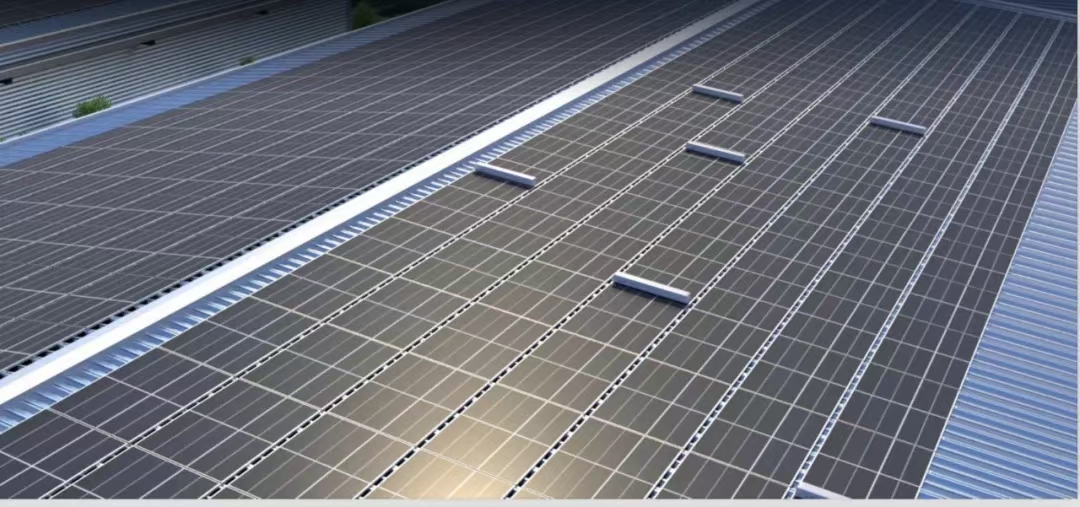兩者不同點在于:BIPV已經作為建筑物必不可少的一部分發揮著建筑材料的作用,不僅能滿足光伏發電的功能要求同時還可以兼顧建筑的功能要求,是光伏產品和建筑材料的結合體,可以替代部分傳統的建筑材料,在建筑設計階段進行一體化設計,在建設中與建筑主體一體成型。而BAPV建筑中的組件只是通過簡單的支撐結構附著在建筑上,拿開光伏組件后,建筑功能依然完整。
The difference between the two is that BIPV has already played the role of building materials as an indispensable part of buildings, not only meeting the functional requirements of photovoltaic power generation, but also taking into account the functional requirements of buildings. It is a combination of photovoltaic products and building materials, and can replace some traditional building materials. It is designed in an integrated manner during the architectural design stage, and formed integrally with the main body of the building during construction. The components in a BAPV building are simply attached to the building through a simple support structure. After removing the photovoltaic components, the building's functionality remains intact.
BIPV將太陽能發電設備—太陽電池板設計成為各種形式的建筑裝飾材料,取代玻璃幕墻、外墻裝飾石材、屋頂瓦等傳統建筑材料,同時作為太陽能光伏發電系統,為用電負載提供綠色、環保、清潔的電力。BIPV已經為建筑物不可分割的一部分,光伏組件起到了遮風擋雨和隔熱的功能,拿開光伏組件之后,建筑將失去這些功能。
BIPV designs solar power generation equipment - solar panels - as various forms of architectural decoration materials, replacing traditional building materials such as glass curtain walls, exterior wall decorative stones, and roof tiles. It also serves as a solar photovoltaic power generation system to provide green, environmentally friendly, and clean electricity for electrical loads. BIPV has become an integral part of the building, and photovoltaic modules have functions of shielding against wind, rain, and heat insulation. After removing the photovoltaic modules, the building will lose these functions.
而BAPV不會增加建筑物的防水、遮風的性能。而且,BAPV會增加建筑負載,影響建筑的整體效果,另外,對建筑物表面來說,BAPV還存在重復建設的問題,嚴重浪費了建筑材料。

BAPV does not increase the waterproof and wind shielding performance of buildings. Moreover, BAPV can increase the building load and affect the overall effect of the building. In addition, for the surface of the building, BAPV also has the problem of repetitive construction, which seriously wastes building materials.
BIPV結構上應遵循“建筑材料”相關規范與技術要求,并非簡單機械化地“綁在一起”,而是高度集中一體化,為“1+1=1”。而BAPV是分體式的,可分開使用,光伏組件拆解下來依然可以獨立使用。
The BIPV structure should comply with the relevant specifications and technical requirements for "building materials", not simply mechanically "tied together", but highly centralized and integrated, with a value of "1+1=1". The BAPV is a split type that can be used separately, and the photovoltaic modules can still be used independently after disassembly.
光伏與建筑的結合,能夠有效降低建筑用能,大力發展低碳、零碳建筑,對于節能減排、保護環境具有重要的現實意義。
The combination of photovoltaic and building can effectively reduce building energy consumption, vigorously develop low-carbon and zero carbon buildings, and has important practical significance for energy conservation, emission reduction, and environmental protection.



 TEL:0531-82390078
TEL:0531-82390078 TEL:18805312017
TEL:18805312017 MAI:sdzdny001@163.com
MAI:sdzdny001@163.com 公司地址: 濟南市歷下區山大路157號
公司地址: 濟南市歷下區山大路157號 天合藍天·山東種電
天合藍天·山東種電 備案號:魯ICP備17052940號-2
魯公網安備37010202700164號
備案號:魯ICP備17052940號-2
魯公網安備37010202700164號
 網站地圖|XML|TXT
網站地圖|XML|TXT

